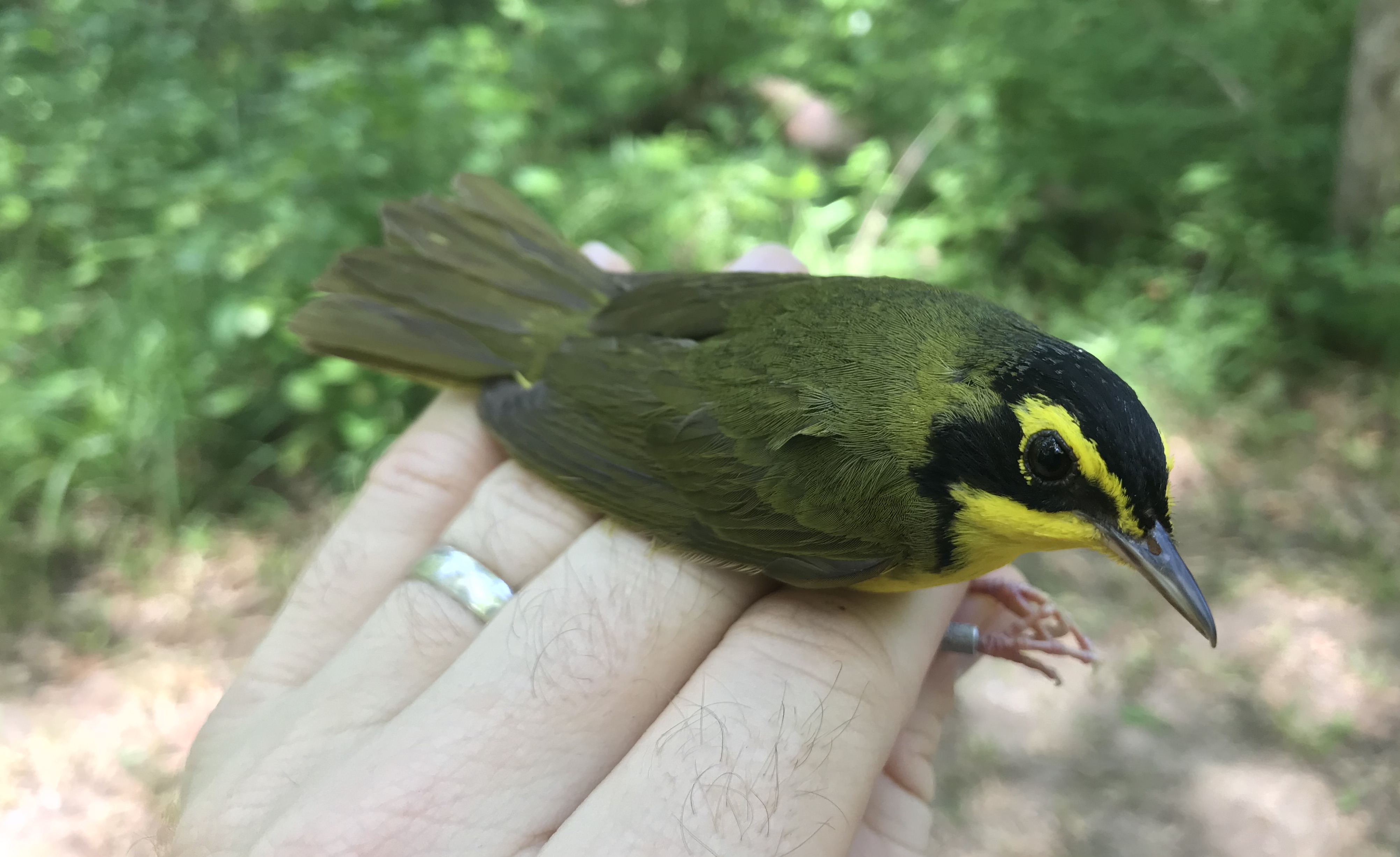Biologists at the Wehle Land Conservation Center in Midway, Alabama have recaptured a male Kentucky Warbler that they originally captured and banded in the summer of 2010. When the bird was first captured nine years ago, biologists determined that it was at least two years old, so its survival through the summer of 2019 makes it at least 11 years old. The bird was banded as part of the Monitoring Avian Productivity and Survivorship (MAPS) program, a continent-wide collaborative bird monitoring program coordinated by The Institute for Bird Populations.
Eric Soehren, a biologist with the State of Alabama, who founded and operates the MAPS banding station at Wehle, was the scientist who originally banded the warbler in 2010. He was also lucky enough to be the one to recapture it this year.
Soehren knew right away that he had an interesting bird in his hand because he recognized part of the number on the leg band as being from a series of bands he used in 2010. "I looked at the number and I saw how tarnished the band was and I thought 'I think we have something special here'," says Soehren.
This warbler's longevity is even more impressive when you consider that it is a long-distance migrant. Kentucky Warblers spend the winter in parts of Central and South America. So the tiny bird– which weighs about as much as a house key (13-14 grams) – has made the long journey between Alabama and its distant wintering grounds at least 22 times.
"They face many perils migrating between sites, often to reoccupy the same small patches of territory at both ends of the spectrum," says Soehren. "The banding station at Wehle provides us with the opportunity to determine their survivorship over time by recapturing them– one of the fundamental objectives of the MAPS bird monitoring program," he continued. "But, it is also very gratifying to recapture a bird you banded years earlier, especially this one, allowing one to really appreciate the migratory feats these birds accomplish annually.”
"This Kentucky Warbler is a really great record to have," says Steve Albert, Assistant Director for Demographic Monitoring Programs at The Institute for Bird Populations. Albert helps administer the MAPS program, which coordinates the effort of bird banding stations across North America. Bird banders participating in the program collect detailed information on each bird they capture and release, which helps scientists determine the bird's age, reproductive status, and body condition.
"This information is really important for migratory birds, which spend their lives in 'two worlds'– their North American breeding areas, and their non-breeding sites in the tropics," says Albert. "Understanding which phase of a bird species’ annual cycle – breeding or non-breeding – contributes most to population change is vitally important for effective conservation of declining or at-risk bird populations," he continues. The Institute for Bird Populations coordinates a similar bird banding program, Monitoreo De Sobrevivencia Invernal or MoSI, with partners in Central and South America as well as the Caribbean.
Amazingly enough, this is the second time Soehren has recaptured this hardy warbler. The first time was in the summer of 2016, when it was at least eight years old. At that time, it set the record for oldest recorded Kentucky Warbler according to the U.S. Geological Survey's Bird Banding Laboratory. The Bird Banding Laboratory issues all bird bands in the United States and keeps track of longevity records. The 2019 bird banding season is still wrapping up, and it is possible another bander may yet submit a record of an older Kentucky Warbler. However, given that the maximum recorded age of any North American warbler species is about eleven years old, it is likely that Soerhen's bird, which is at least eleven, will remain the oldest living Kentucky Warbler on record.
The Wehle Land Conservation Center (WLCC) was established in 2004 and is supported in part through the Robert G. Wehle Charitable Trust. It provides public outdoor recreational opportunities, educational programs, and operates the Elhew Field Station which fosters wildlife monitoring and research initiatives.






